|
When you read about personal color analysis, you'll often come across the term dominant trait. We know - hopefully we know! - that color has three dimensions, and any given color can be described as being high or low in each of the three dimensions. So a color can be - warm or cool in hue - light or dark in value - high or low in chroma (bright or soft) The palettes of each of the 12 seasons are harmonious within themselves. Any given palette can be said to show a dominant trait in its colors. The Dark Winter and Dark Autumn palettes, for example, are predominantly dark, or low in value. The Bright Spring and Bright Winter palettes are predominantly bright, or high in chroma. Now, some writers will suggest that you can identify a person's season by identifying the dominant (and secondary) traits of that person's coloring. You see this a lot online. I call it the "dominant trait" method of color analysis. The thinking goes like this: you can look at a person's skin, hair and eyes, and judge whether her personal coloring is mainly dark, light, soft, bright, cool or warm. Once you figure this out, you immediately have her narrowed down to two seasons. Unfortunately, personal color analysis doesn't work this way. If only it did! Departure from this idea is part of what separates the followers of Kathryn Kalisz's teachings from other thinkers in the world of color analysis. Season can't reliably be determined by identifying the "dominant trait" in someone's appearance. It can only be determined by identifying the traits that characterize the best colors for that person. A Bright is not always obviously bright in personal coloring. A Dark is not always obviously dark. A Soft is not always obviously Soft. And so on. A great example: Lupita Nyong'o. If you're using the "dominant trait" method to determine Ms. Nyong'o's season, you will likely think something like this: "Her skin tone is quite dark. Her eyes are very dark. Her hair is very dark. 'Dark' must be her dominant trait; she must be a Dark Autumn or Dark Winter." But that's not right! Her best colors are not dark and rich. Instead, she's most fantastic in super-bright hues. The dominant trait of Ms. Nyong'o's best colors is brightness. Would you have looked at her face, hair, and eyes and called "brightness" the dominant trait of her personal coloring? Probably not easily. (This is one big problem with the "dominant trait" method of determining season: it often results in women of color getting automatically, inaccurately slotted into Dark Autumn and Dark Winter.) Avoid the "dominant trait" method of determining your own season. It may well lead you astray. Instead, focus on figuring out your best colors. You can do it. :-)
First published in March 2014.
49 Comments
Bertha Patterson
3/4/2014 06:23:29 am
This is excellent material, especially for us persons of color.
Reply
Kirsten I.
3/4/2014 03:45:47 pm
Glad to see Lupita analyzed as Bright! When I saw her in her ice blue gown at the Oscars, I noticed how the color worked as high contrast on her and how beautiful she looked. The photos of her posted here cement my impression of a naturally Bright person. And speaking of the Dominant Trait theory, it seemed like an awful comedown from Carole Jackson's Color Me Beautiful books. I'm so glad to see the 12 Seasons applicable to people of all races and NOT determined by superficial coloring.
Reply
Jo
3/17/2014 11:56:48 pm
Hello Rachel,
Reply
Rachel Arnt-Schemmel
3/18/2014 08:47:35 am
Hi, Jo.
Reply
Jo
3/18/2014 09:04:16 pm
I rather see her as Bright or True Winter - she can handle shocking colours and black. Marigold leaded me to conclusion that she might not be spring. I read somewhere that she has been classified as BSp and it occurred to me that it’s mistake.
Reply
Heather
3/20/2014 12:45:08 am
In every photo I've looked at of her online, where she's wearing black, there is a dark, harsh, reflection under her chin. She does not balance black. Personally I would tend to believe LSum.
Morgan
3/20/2014 04:49:57 am
What´s your opinion? Do you think Lupita N´yongó is a Bright Winter or a Bright Spring?
Reply
Rachel
4/24/2014 04:25:24 am
Hi, Morgan. :-)
Reply
Jo
3/22/2014 10:18:20 pm
Can you give an example of blond BSp? If there are any natural blonde women in this world...
Reply
Rachel
4/24/2014 04:28:18 am
Jo, I'm still searching for one myself! Like the mythical Blonde Winter, the Blonde Bright Spring can exist in theory but I haven't yet come across her.
Reply
Rowena
5/6/2014 09:23:38 pm
They exist - I think I might be one! I was draped as a spring (4 seasons system) but was not satisfied with this. With the help of your colour cards (and a friend) I identified myself as Bright Spring.
Mary
3/23/2014 01:05:20 pm
It helps me, sometimes. I only got into color analysis a few months ago, but the quiz that used dominant trait analysis on Pretty Your World was my introduction to the whole thing and I knew right away I was soft. Unfortunately, that led to my trying to analyze people's coloring based on the dominant trait theory and failing most of the time. But after I read this blog and saw the draping-only theory stressed it's been eye opening to me, realizing you really do need to drape. I've been trying to analyze a lot of celebrities and I never would have known Gabriella Wilde or Kirsten Dunst were brights before looking at them draped in different colors; on screen they've often been made to look light spring-ish, I think. However, I've also noticed that brights' eyes often pop out in such a way that it's clear they need more color to flatter them when they're in all black... That was how I analyzed PJ Harvey as a bright recently. In the photo you posted here her eyes give me that vibe, too... But yeah, without draping I refuse to come to absolute conclusions anymore.
Reply
4/21/2014 11:55:31 pm
Great read Rachael. My dominate trait is light but look best in BSP.
Reply
Laurel Harrington
4/24/2014 03:40:08 am
I could not agree more. In fact I have no dominant trait at all. I am very medium looking. However I am a dark winter who looks best in dark, cool colors.
Reply
Celeste
6/20/2014 02:59:24 am
I actually think with the dominant trait method she would be a clear. Her hair and eyes are dark but her skin is lighter so that would place her in clear.
Reply
Sue
7/19/2014 04:12:54 am
I've always been curious about Carolyn Bessette Kennedy's personal colors. She wore a lot of black and white with the occasional caramel brown pants. Is she a bright season?
Reply
Sue
7/20/2014 01:34:15 am
Correction: Was she a bright season?
Reply
Rachel Arnt-Schemmel
9/7/2014 07:05:57 am
It's a really good question. I have wondered too. I haven't undertaken a serious study of her, but my guess is Light Spring. I think black is perhaps too strong for her.
Reply
Jessica
12/5/2015 03:08:51 am
Hi Rachael, my daughter has extremely dark brown eyes, Ivory skin and golden blonde hair. I've been trying to determine her season for months now and she doesn't really fit into any. She looks better in light spring and light/soft Autumn colours, however can look lovely in summer pale pink and pale blue! My other daughter and myself fit well into soft Autumn, with dark golden blonde hair, lighter brown eyes and golden beige skin. It's the black brown eyes and blonde hair of my daughter that are atypical. There are clear categories for people with light eyes and dark hair.. Are dark eyes and light hair clear too?
Reply
Rachrl
1/11/2016 03:56:11 pm
Are there truly clear categories for certain hair and eye colors? I don't think there are.
Reply
Melina
4/17/2019 03:53:02 am
I think what Jessica meant here is that in some systems, people with dark hair and light eyes automatically belong to the category "Clear" (called Bright in other systems), for example in the one I mention below, Colour Me Beautiful (book by Henderson & Henshaw). That's obviously faulty thinking IMO, not being one to subscribe to this whole "dominant trait theory", and also I really don't think all Bright Springs have dark hair, probably the majority does not... (I'm myself dark blonde with clear eyes, and consider BSp as one of my likeliest seasons.)
Reply
Melina
4/17/2019 03:55:35 am
And there are even many light-haired Bright Winters, forgot to mention that. ;)
Melina
11/18/2018 07:51:14 am
So great to have read this & seen the Dominant trait theory busted! I'm currently reading a book that adheres to the very same "dominant trait" method of color analysis, without actually using that term (it's Colour Me Beautiful by Henderson & Henshaw), and totally disagree with the method! (I just find it interesting to compare colour palettes etc, and it's borrowed from public library, wouldn't spend my money on a book of that system ;).)
Reply
Trisha
8/15/2019 04:45:43 pm
I don't think Colour me Beautiful use the dominant trait any more, at least in the UK. I have been draped by them twice and both times they had no idea what I would be from just looking, made no pre-judgement, it was all down to the careful draping done over a matter of several hours.
Reply
Melina
8/16/2019 03:13:50 am
Trisha, that's intriguing, as the book I mentioned above most definitely does! (Just look it up, if you don't believe me ;)) "Careful draping done over a matter of several hours" sounds very much like Sci/Art, but glad if others are adopting their methods, of course! :)
Trisha
1/1/2021 05:17:49 pm
Yes, strangely, I was given a copy of the book you mention at the end of the draping session. When I questioned the different method involved, I was told the dominant trait aspect of the book is there for rough guidance only, CMB no longer uses it, but believes it can be of some use, if not able to get to a personal draping; its just not an foolproof method to rely on. I accepted the book provides some use to some people on that basis. However, if I had used only the book, my diagnosis would have been wrong, the draping led to an entirely different group, which was also, interestingly, the same one as I came out with the TIB quizz.
Marissa
4/15/2019 05:49:30 pm
I've been guilty of using the dominant system. I get bored in public sometimes and start guessing people's seasons lol.
Reply
Frida Kristine Bjerke
4/15/2019 07:37:06 pm
This is true! I dislike when there is this assumption that light blondes are either light summer or light spring. I have seen brunettes who are light summer. My mother, for instance is a platinum blonde, but she is in fact warm autumn. However, the darkest colours in that palette do overpower her.
Reply
Melina
4/16/2019 03:48:27 am
Great to have this one re-posted, as it truly never loses relevancy! (I notice I've last commented on this in November myself ;)) Sadly, the 'dominant trait method' really is the dominant method used online, in books etc, and thus most people think one can simply draw a conclusion about one's season this way, based on one's hair or eye colour! Wrong, but there you go.
Reply
Rose
4/17/2019 10:58:06 pm
This is a great article, thank you, Rachel! I couldn't agree more. When I first tried to figure out my season, I found articles about finding my dominant trait and I was so confused! I couldn't work it out, I don't really have a dominant trait lol I have warm, medium hair and cool/neutral skin, medium blue/green eyes. The dominant trait method lead me to think I was a soft season. However, after a professional analysis, I discovered I'm a bright winter. I'd never have picked bright winter using the dominant trait method. Love your site :)
Reply
Melina
4/18/2019 12:57:01 pm
Rose, you're a prime example of how faulty the dominant trait method is! ;) I'm the same in that I'd surely end up in the "Soft" category by that method. No obviously visible "dominant trait" here either - actually I don't believe *most* people have one! ;) So even the whole grounding basis of that system is wrong. (I haven't been professionally draped but now believe I'm a likely Bright Spring, so Soft would be very obviously wrong on me, too.)
Reply
Rose
4/19/2019 10:05:43 am
Hi Melina :) Thank you for responding to me :) I agree with all your comments here. The dominant trait method sure is faulty and can turn it all into one big ever-looping puzzle. lol Definitely best to try on the colours and see for yourself. Bright Spring is beautiful, btw :) Have a great day!
Melina
4/20/2019 05:50:55 am
Thank you, Rose, you too :)
Nancy
4/18/2019 10:28:46 am
I'll give another perspective -- my coloring is Cool, with medium values and medium intensities best. I fit between True Summer and True Winter and find that the Cool tonal palette has the best range of colors for me. As it happens, it also fits my Style Identity of Natural/Classic/Romantic (denim, neutrals, jewel colors). So, don't assume that one size fits all.
Reply
W.
4/18/2019 06:38:51 pm
I had an interesting experience of being typed by dominant trait years ago -- and it turned out to be correct. I am a light summer, and I look very much like youry expect. But I'm glad to have learned that this doesn't work for everyone. I have a child who I mistook for a summer at first, but have since realized she's a bright winter. I would never have guessed that from looking at her.
Reply
Adriana
4/20/2019 12:58:42 am
Currently wondering... if Chiara Scelsi is RCG? Also wondering if Liya Kebede is RDC or EDC. Any thoughts?
Reply
Melina
4/20/2019 05:54:34 am
Are they famous...? I must be quite out of the loop then, as I've never heard of either of those people (nor most others mentioned here) ;D (Though OTOH, I'm not in the US but in Europe, which may explain it.)
Reply
Adriana
4/20/2019 01:25:22 pm
Forbes had Liya listed as one of the highest paid models in the world at one point.. so yes I’d say they’re doing rather well off and have high status in their profession. Not that it matters for style analysis LOL.
Melina
4/23/2019 02:55:00 am
Adriana, I don't doubt they may be well off and top of their profession, I didn't say that, only that I haven't heard of them (and many others mentioned here as "celebrities"), so that does make me wonder how famous they are ;) But it's true that I've never been into celebrities much, and don't actively follow them, read celebrity magazines or online sites, etc. Only some people are so undeniably famous that one simply can't avoid hearing of them, but I do realize that's very few people. :)
Megan
4/20/2019 11:37:08 am
For Kebede, maybe EDG? Classic seems too underwhelming on her. I think Gamine (and Ingenue) can sometimes look like Classic because of the crispness of the clothes.
Reply
Adriana
4/20/2019 06:02:19 pm
Thanks Megan! EDG sounds on point! Lastly, I’m wondering about who are EDI types? So far, I’ve only come up with Devon Aoki and Keanu Reeves. I’d know there has to be a wider ethnicity range than that (and more women) but the only EDIs I’ve been able to identify are Asian-heritage.
Adriana
4/20/2019 06:21:07 pm
Ooh and ECG? Holiday Grainger? Can’t think of any others for that type either..
Adriana
4/20/2019 05:56:41 am
Also! I just discovered that I’m Dramatic Gamine Ingenue! I couldn’t help but laugh when I stumbled across post of the rarest types and that ID was listed. I’d say that’s accurate, I’m one of those people who rarely gets mistaken for others and I don’t look much like anyone in my family. I was wondering can anyone point me in the right direction of Dramatic Gamine Ingenue celebrities and such? I’d love to chat with any fellow DGIs as well!
Reply
Megan
4/20/2019 11:22:16 am
Hi, I think Youtuber Safiya Nygaard may be DGI.
Reply
Shawna
4/20/2019 03:19:10 pm
This is one of my favourite posts because the dominant trait method drives me nuts. Sure, it does work for some but not for many and all of the online experts who insist you can't be a certain type if you have X coloured hair or if you are light overall blah blah blah irk me. I dislike people claiming to be experts when they are not.
Reply
Seraia
5/7/2019 04:33:33 pm
I'm sorry this isn't to do with the article. I'm sure I'm an autumn- spring I have extremely pale wan skin which is very warm brown hair with red highlights. I suppose I lean towards autumn but I feel like something is missing with the 12 seasons. For example warm autumn's are medium chroma slightly deep and very warm while true springs are medium high chroma and very warm. But what if you are very warm, a touch of depth and a medium high chroma? There doesnt seem to be a typing system for the bits between the cracks. Another example is what if you had the softest and lightness of soft autumn but WITHOUT the coolness of summer? And there's so many of these you can do for each season. For me I feel like springs vibrancy fits but is a little too white and autumn's depth fits but is a little too muted. What do you think?
Reply
Melina
5/21/2019 04:45:51 am
Seraia, while I love the 12 season system, I do get & also relate to what you said; for example, I believe I'm a Bright Spring, i.e. Spring with Winter mixed in, but I feel some of what is considered Bright Spring is just way too bright IMO... I could of course be a BSp leaning True Spring, but then again, the Winter part is very important for me, I feel (e.g. I'm so good in all-black)... Oh well, I truly do not see what other season I could be (have tried them all), and lipstick draping confirms this season very well for me. ;)
Reply
Melina
5/21/2019 04:50:07 am
But what I was saying, basically, was that I do think there should be a season that is a mix of Spring and Winter, but NOT ultra-super-high chroma (which it is seen as at least by Sci/art). :) So very much like you felt, too.
Reply
Elise
12/1/2022 03:51:00 am
Hi Rachel. I know you don't post much anymore, but I'm wondering if using the dominant trait theory for skin TONE is also faulty. I know you have made it clear that a person can have almost any shade of skin and color of hair/eyes and be any season because it's all about how your skin reacts to colors. Is this true for skin tone too, i.e. yellow tones/pink tones, warm/cool/neutral/olive? In other words, can I be an Autumn with cool-toned skin? Or is that an oxymoron?
Reply
Leave a Reply. |
About Me...I'm passionate about helping people become their most authentic and beautiful selves. Categories
All
|
- home
- Blog
-
-
- Book your virtual style analysis
- ♂ DRAMATIC style type
- ♂ NATURAL style type
- ♂ GAMINE style type
- ⚥ CLASSIC style type
- ♀ INGENUE style type
- ♀ ROMANTIC style type
- ♀ ETHEREAL style type
-
- ⚥ ♂ Classic Gamine -- The Prep Schooler
- ⚥ ♀ Classic Ingenue -- The Class President
- ⚥ ♂ Dramatic Classic -- The Art Critic
- ♂ ♂ Dramatic Gamine -- The Punk Rocker
- ♀ ♂ Dramatic Ingenue -- The Childlike Czarina
- ♂ ♂ Dramatic Natural -- The Amazon Queen
- ⚥ ♀ Ethereal Classic -- The Delicate Sophisticate
- ♀ ♂ Ethereal Dramatic -- The Sorceress
- ♀ ♂ Ethereal Gamine -- The Sprite
- ♀ ♀ Ethereal Ingenue -- The Fairy
- ♀ ♂ Ethereal Natural -- The Earth Goddess
- ♀ ♂ Gamine Ingenue -- The Girlish Mod
- ⚥ ♂ Natural Classic -- The Prep
- ♂ ♂ Natural Gamine -- The Tomboy
- ♀ ♂ Natural Ingenue -- The Outdoorsy Sweetheart
- ⚥ ♀ Romantic Classic -- The Sexy Sophisticate
- ♀ ♂ Romantic Dramatic -- The Vamp
- ♀ ♀ Romantic Ethereal -- Aphrodite
- ♀ ♂ Romantic Gamine -- The Firecracker
- ♀ ♀ Romantic Ingenue -- The Demure Seductress
- ♀ ♂ Romantic Natural -- The Babe Next Door
-
- ⚥ ♀ ♂ Classic-Gamine-Ingenue
- ⚥ ♂ ♂ Dramatic-Classic-Gamine
- ⚥ ♀ ♂ Dramatic-Classic-Ingenue
- ♂ ♂ ♀ Dramatic-Gamine-Ingenue
- ⚥ ♂ ♂ Dramatic-Natural-Classic
- ♂ ♂ ♂ Dramatic-Natural-Gamine
- ♂ ♂ ♀ Dramatic-Natural-Ingenue
- ⚥ ♀ ♂ Ethereal-Classic-Gamine
- ⚥ ♀ ♀ Ethereal-Classic-Ingenue
- ⚥ ♀ ♂ Ethereal-Dramatic-Classic
- ♂ ♂ ♀ Ethereal-Dramatic-Gamine
- ♀ ♂ ♂ Ethereal-Dramatic-Natural
- ♀ ♀ ♂ Ethereal-Dramatic-Ingenue
- ♀ ♀ ♂ Ethereal-Gamine-Ingenue
- ⚥ ♀ ♂ Ethereal-Natural-Classic
- ♂ ♂ ♀ Ethereal-Natural-Gamine
- ♀ ♀ ♂ Ethereal-Natural-Ingenue
- ⚥ ♂ ♂ Natural-Classic-Gamine
- ⚥ ♀ ♂ Natural-Classic-Ingenue
- ♂ ♂ ♀ Natural-Gamine-Ingenue
- ⚥ ♀ ♂ Romantic-Classic-Gamine
- ⚥ ♀ ♀ Romantic-Classic-Ingenue
- ⚥ ♀ ♂ Romantic-Dramatic-Classic
- ♂ ♂ ♀ Romantic-Dramatic-Gamine
- ♀ ♀ ♂ Romantic-Dramatic-Ingenue
- ♂ ♂ ♀ Romantic-Dramatic-Natural
- ⚥ ♀ ♀ Romantic-Ethereal-Classic
- ♀ ♀ ♂ Romantic-Ethereal-Dramatic
- ♀ ♀ ♂ Romantic-Ethereal-Gamine
- ♀ ♀ ♀ Romantic-Ethereal-Ingenue
- ♀ ♀ ♂ Romantic-Ethereal-Natural
- ♀ ♀ ♂ Romantic-Gamine-Ingenue
- ⚥ ♀ ♂ Romantic-Natural-Classic
- ♂ ♂ ♀ Romantic-Natural-Gamine
- ♀ ♀ ♂ Romantic-Natural-Ingenue
- Shop
- Book a Virtual Style Analysis!
- Contact me
- home
- Blog
-
-
- Book your virtual style analysis
- ♂ DRAMATIC style type
- ♂ NATURAL style type
- ♂ GAMINE style type
- ⚥ CLASSIC style type
- ♀ INGENUE style type
- ♀ ROMANTIC style type
- ♀ ETHEREAL style type
-
- ⚥ ♂ Classic Gamine -- The Prep Schooler
- ⚥ ♀ Classic Ingenue -- The Class President
- ⚥ ♂ Dramatic Classic -- The Art Critic
- ♂ ♂ Dramatic Gamine -- The Punk Rocker
- ♀ ♂ Dramatic Ingenue -- The Childlike Czarina
- ♂ ♂ Dramatic Natural -- The Amazon Queen
- ⚥ ♀ Ethereal Classic -- The Delicate Sophisticate
- ♀ ♂ Ethereal Dramatic -- The Sorceress
- ♀ ♂ Ethereal Gamine -- The Sprite
- ♀ ♀ Ethereal Ingenue -- The Fairy
- ♀ ♂ Ethereal Natural -- The Earth Goddess
- ♀ ♂ Gamine Ingenue -- The Girlish Mod
- ⚥ ♂ Natural Classic -- The Prep
- ♂ ♂ Natural Gamine -- The Tomboy
- ♀ ♂ Natural Ingenue -- The Outdoorsy Sweetheart
- ⚥ ♀ Romantic Classic -- The Sexy Sophisticate
- ♀ ♂ Romantic Dramatic -- The Vamp
- ♀ ♀ Romantic Ethereal -- Aphrodite
- ♀ ♂ Romantic Gamine -- The Firecracker
- ♀ ♀ Romantic Ingenue -- The Demure Seductress
- ♀ ♂ Romantic Natural -- The Babe Next Door
-
- ⚥ ♀ ♂ Classic-Gamine-Ingenue
- ⚥ ♂ ♂ Dramatic-Classic-Gamine
- ⚥ ♀ ♂ Dramatic-Classic-Ingenue
- ♂ ♂ ♀ Dramatic-Gamine-Ingenue
- ⚥ ♂ ♂ Dramatic-Natural-Classic
- ♂ ♂ ♂ Dramatic-Natural-Gamine
- ♂ ♂ ♀ Dramatic-Natural-Ingenue
- ⚥ ♀ ♂ Ethereal-Classic-Gamine
- ⚥ ♀ ♀ Ethereal-Classic-Ingenue
- ⚥ ♀ ♂ Ethereal-Dramatic-Classic
- ♂ ♂ ♀ Ethereal-Dramatic-Gamine
- ♀ ♂ ♂ Ethereal-Dramatic-Natural
- ♀ ♀ ♂ Ethereal-Dramatic-Ingenue
- ♀ ♀ ♂ Ethereal-Gamine-Ingenue
- ⚥ ♀ ♂ Ethereal-Natural-Classic
- ♂ ♂ ♀ Ethereal-Natural-Gamine
- ♀ ♀ ♂ Ethereal-Natural-Ingenue
- ⚥ ♂ ♂ Natural-Classic-Gamine
- ⚥ ♀ ♂ Natural-Classic-Ingenue
- ♂ ♂ ♀ Natural-Gamine-Ingenue
- ⚥ ♀ ♂ Romantic-Classic-Gamine
- ⚥ ♀ ♀ Romantic-Classic-Ingenue
- ⚥ ♀ ♂ Romantic-Dramatic-Classic
- ♂ ♂ ♀ Romantic-Dramatic-Gamine
- ♀ ♀ ♂ Romantic-Dramatic-Ingenue
- ♂ ♂ ♀ Romantic-Dramatic-Natural
- ⚥ ♀ ♀ Romantic-Ethereal-Classic
- ♀ ♀ ♂ Romantic-Ethereal-Dramatic
- ♀ ♀ ♂ Romantic-Ethereal-Gamine
- ♀ ♀ ♀ Romantic-Ethereal-Ingenue
- ♀ ♀ ♂ Romantic-Ethereal-Natural
- ♀ ♀ ♂ Romantic-Gamine-Ingenue
- ⚥ ♀ ♂ Romantic-Natural-Classic
- ♂ ♂ ♀ Romantic-Natural-Gamine
- ♀ ♀ ♂ Romantic-Natural-Ingenue
- Shop
- Book a Virtual Style Analysis!
- Contact me
Connect with me!

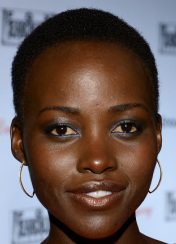
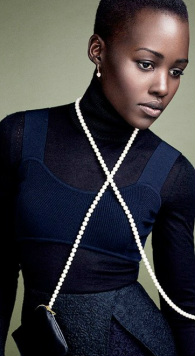
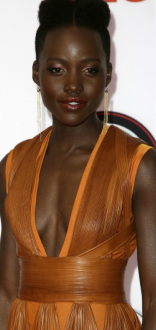
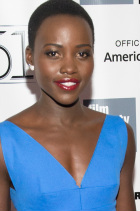
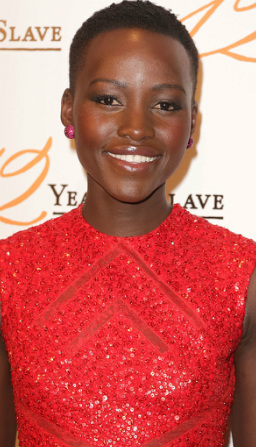



 RSS Feed
RSS Feed